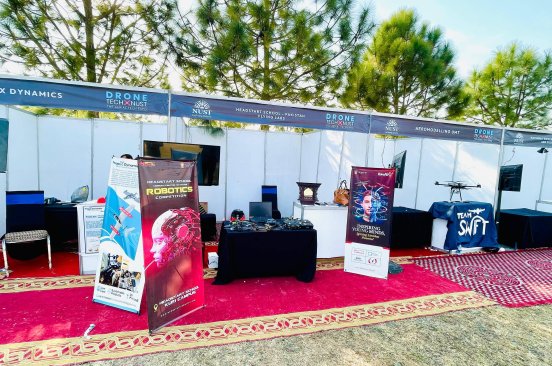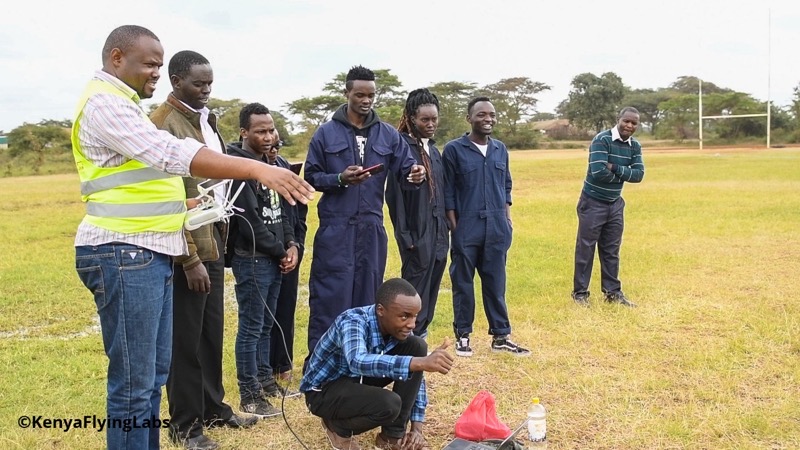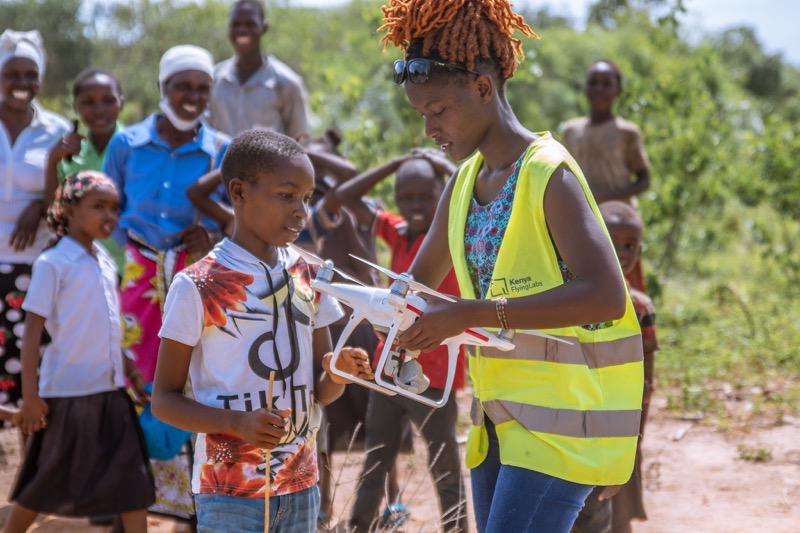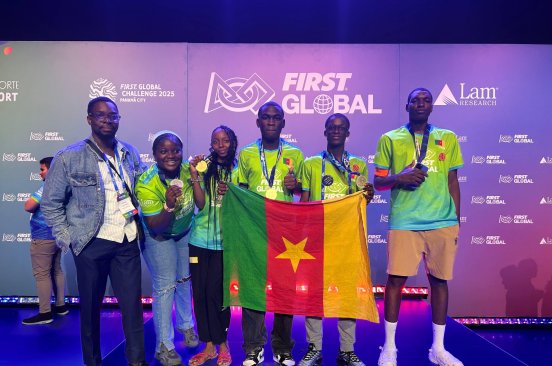
Local Expertise, Global Community: In Conversation with Kenya Flying Labs
Cleopa Otieno reflects on the journey, successes, and challenges Kenya Flying Labs has experienced since joining the Flying Labs Network.
May 12th, 2022
Each installment of the “Local Expertise, Global Community” series will feature conversations between Flying Labs and WeRobotics’ Community Coordination team, exploring the history of their membership within the network, growth, challenges, and what needs to be done to accelerate the acceptance of emerging technologies like drones and robotics as tools for solving social problems globally.

In this edition, we sit down with Cleopa Otieno, Kenya Flying Labs coordinator, to talk about the journey of his Flying Lab. He reflects on what inspired him to join the Network and shares tips to help potential new Flying Labs.
(The interview below was edited for length and clarity)
Q: What’s your name, and tell us when you joined the Flying Labs Network?
A: My name is Cleopa Otieno. I founded Kenya Flying Labs back in 2018 through interaction with WeRobotics. We then proceeded with my colleagues to register it in 2020 as a nonprofit company.
What inspired you to become part of the Flying Labs Network, and what were your expectations and aspirations for the network?
I have always had a great love for technology all my life. New and emerging technology constantly challenges me to find ways for local communities to benefit from it. My Network expectations were—and still are—to provide an opportunity for humanitarian applications within this space. Drones can save lives. I attribute this growth to our great partners at WeRobotics, with whom we’ve worked hand-in-hand from day one of our drone journey.
Kenya Flying Labs has grown incredibly strong despite facing drone restrictions at the beginning of your journey within the Network. What do you attribute your growth sprout to?
I would attribute this to the regulations put in place by Kenya Civil Aviation Authority. Kenya is one of the few African countries with drone regulations. This is shaping the sector and promoting innovation around the technology. It's only a matter of time before Kenya emerges as a leader in UAS applications, just like it has in mobile money.
With great success comes challenges. What kind have you encountered in working in this field? How did you overcome these challenges?
One of the key challenges is the cost of the technology and software that turn drone data into actionable insights. Another challenge in Kenya is the lack of a legal framework around Beyond Visual Line of Sight (BVLOS) operations, which is the future of drone technology. Lastly, batteries are another issue, especially for multirotor drones. This depends on the flight time and international purchase and transport to Kenya. These challenges are momentary because with the advancement of drone technology, prices will undoubtedly reduce, and more long-life batteries are already emerging. Kenya is procuring an Unmanned Traffic Management system that will guide the frameworks for BVLOS operations.
How is Kenya Flying Labs contributing to local communities and impact?
Our goal at Kenya Flying Labs is to engage in projects that support the Sustainable Development Goals (SDGs) achievements using drone technology. For example, through our STEM program, we have been able to train 450 (60% girls and 40% boys) students between the ages of 10- 18 years (with a particular focus on equipping young girls with the necessary skills needed to excel in the STEM career field) on introductory drone courses, ethical flight safety and real-life application of drone technology relevant to the African context. We have also carried out environmental projects for large-scale reforestation in Kenya. This project directly improved the climate resilience of nine villages in Tana River County, sustainably managed the ecosystem and climate change and restored the communities’ livelihoods by reseeding the hotspot areas with indigenous trees, covering at least 250 acres for every village.

Our focus as an organization is to ensure that local communities benefit positively from using new technologies. One of the challenges faced in the global south is that drone services are pretty expensive. As a result, local communities often do not immediately enjoy the benefits or get exposed to new technologies early. However, through various partnerships with local and international organizations, we ensure that we involve local communities directly through our projects or by providing awareness and training programs to expose them to the use of drone technology for social good.
In the Global South, the idea of using Drones and Robotics to solve social problems is not-so-popular. What would you suggest is needed to accelerate growth?
I think more funding should deliberately promote innovative applications using drones and develop innovation spaces around the technology. As we say within the Flying Labs network, it is not about drones but the data/information we can generate from the great platforms and sensors available today. How we can accelerate Artificial Intelligence (AI) and Machine Learning (ML) skills locally should be the focus in the global south. When these skills are available locally, drone technology becomes an enabler in solving local challenges.
How can drones and data contribute to changing mindsets (on innovation and technology) in Kenya?
Drone usage is already drawing attention and changing mindsets. It’s proven to improve farming and crop yields, medical emergencies, accessing hard-to-reach communities, and supporting global environmental action.
The more drones address social challenges in agriculture, health, environment, education, etc., the more countries and organisations will seek to adopt drone usage. This is achieved by involving the youth in the innovation space through training, capacity support, and technology transfer to enable the youth to further this course of drone usage and mindset change. For example, the median age in Africa is 25 years old, making it the continent with the youngest population in the world. This population influx is an excellent opportunity for organizations to accelerate skills development among the youths to achieve the Sustainable Development Goals.
Any tips for potential new Flying Labs?
Collaboration and local action are key to solving our problems, and the Flying Labs network provides a platform. Let's make use of this to promote drone technology in the world.
Thank you, Cleopa, for chatting with us! Follow Kenya Flying Labs on Twitter (@kenyaflyinglabs) to stay updated with their latest activities.
Category(s)
Recent Articles
View All »

Team Cameroon's Road to Victory at the First Global Robotics Competition 2025
